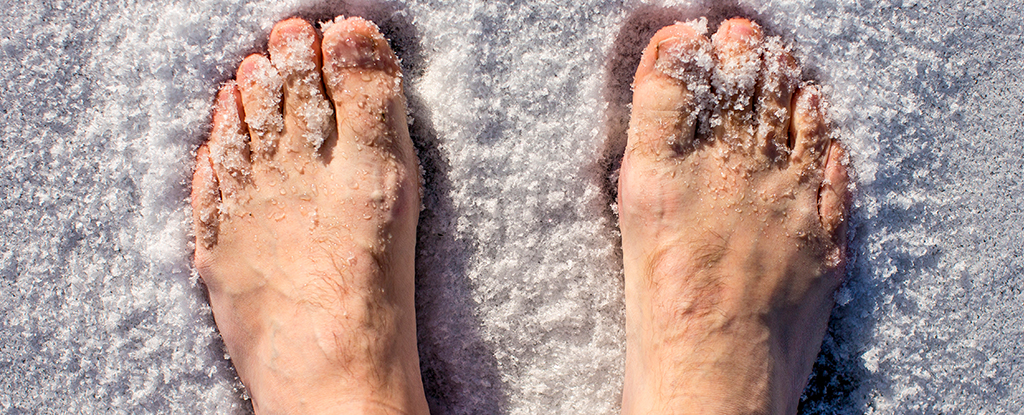Frostbite can occur at temperatures just below freezing (-0.55°C or 31.01°F), though at such temperatures frostbite is typically mild and no permanent damage will result.
But what happens if you live and work somewhere where it gets much colder?
As a Canadian, I am used to seeing news reports during cold snaps warning people to avoid going outdoors due to frostbite being possible “in under a minute”.
Until now, there have been no approved therapies for severe frostbite. But on February 14 2024, the US Food and Drug Administration (FDA) announced that it had approved the very first drug to treat frostbite.
Frostbite is evolution’s response to prolonged or extreme cold, causing blood vessels to constrict and blood flow to slow in the extremities. This keeps blood flowing in the vital organs warm, increasing the chance of surviving in the extreme cold.
The downside is this can result in permanent damage to the fingers, toes and parts of the face, sometimes requiring amputation of the affected body parts. (Frostbite has resulted in some odd traditions, such as the Sourtoe Cocktail in Dawson City where customers drink a cocktail containing an amputated frostbitten toe.)
Repurposed drug
The new drug, called iloprost (brand name Aurlumyn), is repurposed. This means that it was not originally developed to treat frostbite. In this case, it is used to treat high blood pressure within the lungs.
Repurposed drugs have already passed important (and expensive) human safety testing and are therefore much cheaper (about US$40-80 million or £32-64 million) to develop for additional medical issues versus creating a new drug (about US$1-2 billion), making drug repurposing an attractive way to find new treatments.
Many drugs have been tried as potential treatments for severe frostbite. However, iloprost is the first to be put through a clinical trial where patients with severe frostbite were randomly allocated to receive iloprost or not.
The study found that 60 percent of the patients who did not receive iloprost had injuries sufficiently severe to warrant amputation, versus 0 percent of the patients who received iloprost.
While the total number of patients tested in this study was small at 47, the combined facts that there are no other approved pharmaceutical treatments for frostbite and the impressive digit-saving results found in this randomised human trial were sufficient to convince the FDA to approve this repurposed therapy for severe frostbite.
How it works
Iloprost works by expanding the blood vessels (called a vasodilator) of patients and stopping blood clots from forming. As frostbite causes constriction of blood vessels, this suggests one mechanism through which iloprost helps heal frostbitten tissue is by reversing this constriction.
However, whenever blood flow is reintroduced in such tissue, it can paradoxically worsen the injury and cause more damage. This is called “reperfusion injury” and is largely caused by a sudden influx of oxygen causing oxidative stress.
Interestingly, iloprost is not only a vasodilator but also reduces oxidative stress, suggesting this dual mechanism of action could help explain its impressive potential as a frostbite treatment.
Frostbite is a common condition in colder parts of the world with one Finnish study finding that 1.1 percent of the Finnish population experiences severe frostbite every year and 12.9 percent suffer from mild frostbite. As the injuries from frostbite can be serious, the approval of a drug that significantly reduces the risk of life-altering amputations of patients’ fingers, toes and noses will certainly be welcome news to many.
However, an unintended consequence may be that the Sourtoe Cocktail Club has a harder time finding new frostbitten toes to add to its collection in the coming years.
Steven R. Hall, Lecturer in Pharmacology, Lancaster University
This article is republished from The Conversation under a Creative Commons license. Read the original article.





